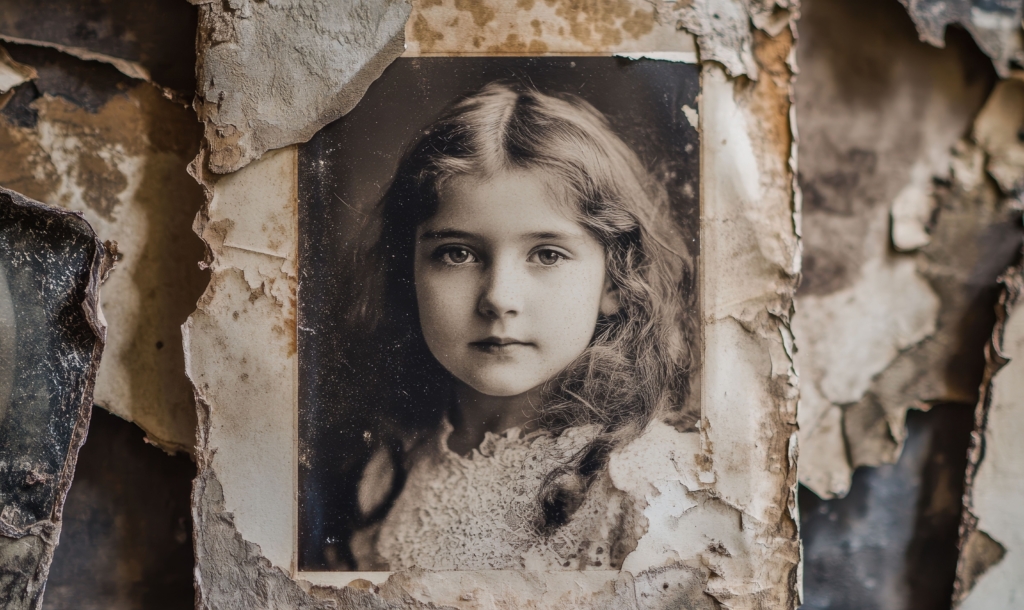It’s the middle of summer, temperatures are soaring, and your attic and garage feel like ovens. You’re focused on keeping yourself cool, but here’s a question you might not have considered: Will heat damage photos?
The short answer is yes. Heat, and the conditions that come with it, can seriously harm your photo collection. Whether they’re loose prints, framed pictures, or albums, photos don’t do well in hot environments.
Here’s what you need to know about preventing heat-damaged photos.
DOES HEAT DAMAGE PHOTOS?
Yes, photos can be damaged by heat. Not overnight, but prolonged exposure to high temperatures can accelerate the aging process of printed photos and negatives. It’s not just the heat itself, but also its side effects: fluctuating temperatures, humidity buildup, and increased exposure to light.
FLUCTUATING TEMPERATURES
Rapid or repeated shifts in temperature can cause expansion and contraction of the photo materials. Over time, that can lead to curling, cracking, or separation of the photo from its backing.
HUMIDITY
Moisture is one of the biggest enemies of photo preservation. Warm, humid conditions can lead to mold growth or sticky prints, making photos fuse together in albums.
LIGHT EXPOSURE
Sunlight doesn’t just raise the temperature; it also hits your photos with UV rays. This light fades inks and dyes, breaking down the chemical structure of your prints. That’s why photos left in sunny spots often end up looking washed out or discolored.
SIGNS OF HEAT-DAMAGED FILM PHOTOS
Does heat damage photos? Yes, and there are a few telltale signs to watch out for. It doesn’t always look dramatic at first, but over time, the effects can really add up.
Here’s what to look for:
SEPARATION OF THE IMAGE FROM THE PAPER BACKING
If the photo’s surface looks like it’s lifting, bubbling, or peeling away from the paper underneath, that’s a sign the emulsion (the image layer) is breaking down. This can happen after exposure to humidity.
PHOTOS STICKING TOGETHER
Ever found a stack of prints all stuck together? That’s often caused by heat and moisture softening the photo surfaces, which then bond when pressed together. Pulling them apart can cause tearing or permanent damage to the image.
CRACKING
When photos are exposed to constant expansion and contraction due to heat swings, the surface can develop tiny cracks. They look like fine lines across the image, and are especially noticeable in glossy prints or older black-and-white photos.
FADING
Fading is one of the most common and noticeable signs of heat damage. Heat, especially when combined with light, speeds up chemical degradation in the inks or dyes.
COLOR SHIFTS
Sometimes the damage distorts the image rather than fades it. In heat-damaged photos, whites may turn yellow, blues may turn green, and reds may become overly dominant.
HOW TO PROTECT PHOTOS FROM HEAT DAMAGE
If you’ve searched “Can photos be damaged by heat?” on Google, then you probably already know you need to make some changes to protect your prints.
Whether you’re dealing with summer heatwaves or just want to keep your memories safe forever, proper storage makes all the difference.
AVOID ATTICS, BASEMENTS, AND GARAGES
These spaces don’t have temperature and humidity control, making them a poor option for photo storage. Instead, keep your photos in a part of your home that stays cool, dry, and dark, like a closet or cabinet. Be sure to store them far away from heat sources like radiators or vents.
USE ARCHIVAL-QUALITY STORAGE MATERIALS
Don’t just throw your prints in an old shoebox and be done with it. Look for acid-free photo boxes, sleeves, and albums. These materials help protect against both heat and environmental pollutants, and they won’t degrade over time like regular plastic or paper might.
KEEP THEM OUT OF DIRECT SUNLIGHT
Wherever possible, avoid displaying photos near windows or heat sources. UV rays and heat from the sun can cause fading and warping. Create a copy print to display, and store the original in a safe place. If you want to display original prints in your home, consider using UV-protective glass in the frame.
CONTROL HUMIDITY IF YOU CAN
Ideal storage conditions for photos are around 68°F with 30 to 40% relative humidity. If you live in a particularly hot or humid area, using a dehumidifier or, in extreme cases, a climate-controlled storage unit can really help.
STORE PHOTOS FLAT AND SPACED OUTS
Tightly packed photos are more likely to stick together or warp if temperatures rise. Use dividers or sleeves to give each photo some breathing room.
DIGITIZE YOUR COLLECTION
Even with the best storage, no printed photo lasts forever. Digitizing your prints is the best way to avoid heat-damaged photos. Once scanned, your digital images can be stored in the cloud, backed up, and shared without risking the original.
DIGITIZE YOUR PHOTOS FOR LONG-TERM PRESERVATION
The best way to protect your photos from heat, humidity, and other forms of damage is to digitize them. Once scanned, your memories are safe from environmental threats and easy to share, store, and back up.
EverPresent’s professional scanning and digitizing services can help you protect your memories. Learn more and get started here.
FAQs
CAN YOU STORE PHOTOS IN A HOT GARAGE
It’s not a good idea; garages often have extreme temperature swings and high humidity, both of which can damage photos over time.
CAN I STORE PHOTOS IN A HOT ATTIC?
You should avoid this. Attics tend to trap heat and moisture, creating the perfect conditions for fading, warping, and mold growth.
AT WHAT TEMPERATURE DO PHOTOS GET DAMAGED?
Photos start to degrade more quickly at sustained temperatures above 75°F, especially when combined with humidity. Cooler, stable environments are always best.
DOES HEAT WARP PICTURES?
Yes. High heat can cause photos to warp, especially if they’re stored incorrectly.


